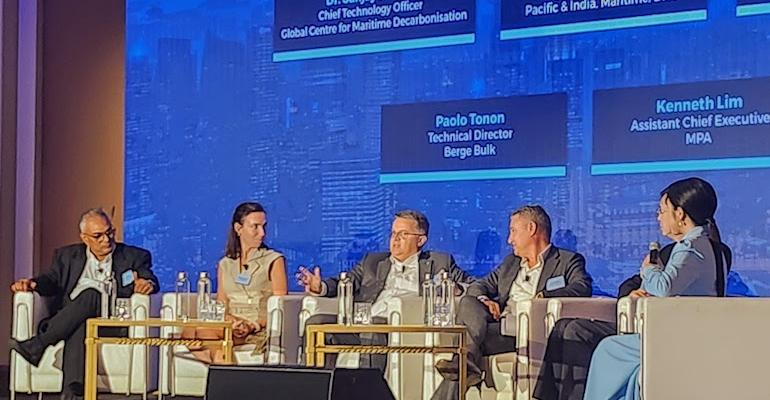The Australian mining group has previously announced a goal to reach zero emissions by 2030 for its shipping and mining fleet by using green ammonia.
While dual fuel methanol engines have rapidly become the alternative fuel of choice for shipowners ordering newbuildings this year Fortescue’s Global Head of Shipping and Marine Projects, Andrew Hoare, believes this is simply kicking the can down the road.
Speaking at DNV’s Singapore Energy Transition 2023 Conference on Monday Hoare said: “I think it's very easy for engine manufacturers to say, ‘this is a beautiful engine, but it's methanol’. But we know that there isn't enough methanol on the planet to supply those ships.”
Fortescue is instead putting its efforts into developing ammonia, which it believes is a truly green fuel, for its shipping and transport assets.
In 2021 Fortescue announced that it planned to convert its fleet of eight of Very Large Ore Carriers (VLOCs) to run on ammonia, endeavours which Hoare said they are continuing to pursue.
In February this year the mining company started to test what it says is the world’s first ammonia fuelled marine engine in Perth, Australia. Hoare said these tests were ongoing and it continued to learn about emissions from the engine. Later this year Fortescue plans to carry out the first ammonia fuel transfers on a vessel it is converting in Singapore, steps it believes are very important to show it is possible to use ammonia as a fuel today.
“We're not trying to be an engine manufacturer, we're trying to say it is possible to do these things now,” Hoare stated.
If it is not able to do this and plug into manufacturers to produce ammonia engines, he said, “What is going to happen is they're just going to sell engines which are able to burn methanol and fuel oil, and they will only burn fuel oil.”
There are a number of ammonia marine engines under development and WinGD expects to deliver its first ammonia dual-fuel engines in 2025, while in July MAN Energy Systems completed a test of ammonia combustion in a two-stroke engine. In August Japanese shipbuilder Mitsubishi Shipbuilding started testing ammonia fuel systems.
Ammonia is highly toxic and considerable concerns remain in the shipping industry over the impact of a spill or accident involving an ammonia fuelled vessel
Meanwhile on land Fortescue is testing ammonia on its locomotives used to transport iron ore from its mines in Western Australia.
Copyright © 2024. All rights reserved. Seatrade, a trading name of Informa Markets (UK) Limited.
Add Seatrade Maritime News to your Google News feed.  |

